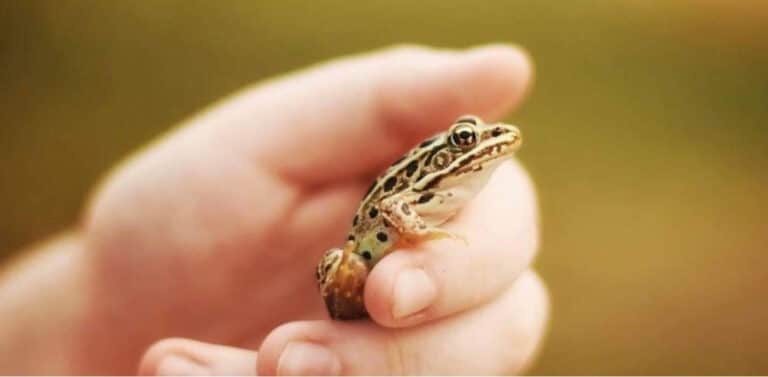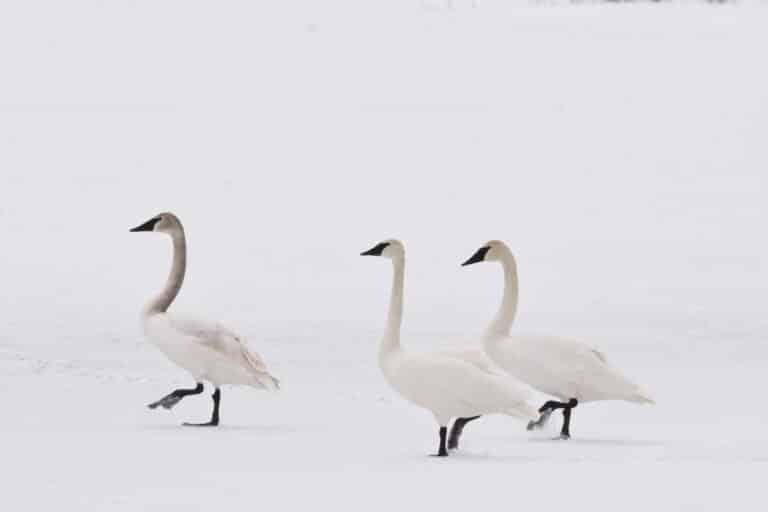Signs of spring are on the horizon!
The summer wildlife is starting to come back out, so let’s take a look at some of the new animals you might see in nature in the coming months.
Table of Contents
Bears

When Spring arrives and the snow begins to melt, bears wake up. According to the DNR website, male bears come out of hibernation in early March, and females with cubs will stay cuddled up until March or April. This means that bears will be waking from their long winter’s nap so be aware of this.
Bears hibernate for six to seven months in Roseau County. As bears emerge from hibernation, their metabolism gradually ramps up and they will begin looking for food at a time when berries and green vegetation are scarce.
The best way to reduce problems with bears is to limit the things that can attract them to a certain location. If a bear finds a good food source, they will continue to return until it is no longer useful. Sometimes bears will wander into residential yards, so keep your eyes peeled to see one of these beautiful creatures in the wild. Just make sure to stay a healthy distance away.
Bears make a huffing snorting sound when nervous or distressed, trying to repel their intruders. Adults vary in weight from 150 (small female) to 500 (large male) pounds.
Bear mate in may-July. The newborn cubs are usually born in January while the mother is still denning. The babies do not hibernate, but the mother provides all the nourishment while she sleeps. Most female bears give birth to 3 cubs and by mid March the cubs weight 5 or 6 pounds. They will leave their den in early April and remain with their mother for 17 months. This means they will hibernate with her for the first year. Remember when you see a bear in nature, you are entering its home so keep a distance as you observe this beautiful beast especially if there are cubs present.
Frogs

Another animal that’s coming out this time of year is frogs.
There are 14 species of toads and frogs found in Minnesota. These species are grouped into three families: toads, treefrogs and true frogs and each have their own unique breeding call and survival strategy.
Toads and frogs often conjure up thoughts of wet places and the mysterious calls rising up out of the waters edge but many are land dwellers. Some toads and frogs even spend their winter under the leaf litter or burrow deep below the frost line.
In the coming weeks they will be emerging for the season. Though the time the frogs will be most active varies depending on species and weather conditions, now is the perfect time to start listening to our so-called “frog operas”. Male frogs use their call to find a mate, though when one frog calls, the others will join. This can create a surprisingly loud symphony of croaking, so take some time to listen to this choir of frogs.
Mosquitos

Though this animal is less than loved by many, they emerge in the spring. Mosquitos are an icon of northern Minnesota, so you’re sure to start seeing a few around this spring. Surprisingly, there are more than 3,000 species of mosquito in Minnesota. Though not all of them are going to cause an itchy bump on your skin. Many mosquitoes feed on birds, frogs, small mammals, or even worms. So don’t feel singled out when you have to deal with a mosquito bite.
Skunks

Skunks are yet another springtime creature that will be soon waking from its winter nap. Minnesota is home to two species of skunks, the striped skunk and the spotted skunk. Stripped skunk winter in burrows.
In Spring, females give birth to four to six naked, blind, and helpless young. They are born with peach fuzz but the strip can be seen on their black skin. Though these creatures look adorable, we don’t suggest you get anywhere near them. Yes of course, we all want a selfie with the real version of Pepé Le Pew, but not all of these creatures are friendly and often carry rabies.
We suggest you observe from a distance. A skunk can spray up to 15 feet away. Only the great horned owl is unruffled by the obnoxious odor of a skunk. Striped skunks make a hissing noise when they are ready to spray. Babies can spray as early as three weeks old.
So, how many skunks does it take to make a horrible smell, you ask? A PHEW!
Canadian Geese

Many Canadian Geese stay in Minnesota for the winter, but those that moved south for the winter are on their way back.
They migrate in V-shaped flocks, sometimes flying as far as 4,000 miles. Canadian Geese were actually split into two separate species in 2004. Canadian Geese have a slightly longer beak than the geese that are now called Cackling geese, so if you take a close look, you might find one of each species. Geese feed mostly on grass, so keep an eye out for these magnificent creatures along our open fields and ditch banks. Canadian Geese mate for life. It’s not uncommon to see a family sitting on eggs in the tall Roseau reeds along fields. The goslings leave the nest shortly after hatching. The birds eat aquatic plants, insects, grass, soybeans, and other crops making the farm fields in the area an all-you-can-eat buffet.
There’s our recap of our favorite (or least favorite, we’re looking at you mosquitoes) animals coming out this spring. So put your mud boots on and take a hike for a chance to see one of these beautiful animals. If hiking isn’t your style, try taking a drive around the wilderness at one of our local forests.
Roseau offers beautiful lodging where you can curl up and hibernate for the night. There is something about the fresh crisp Spring Roseau air that makes you tired after a day in nature. Wake refreshed and hit Hayes State Park for a day of watching mother nature wake from the long winter. It’s a beautiful sight to marvel at.
